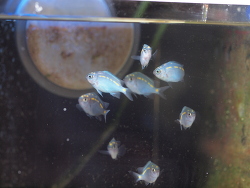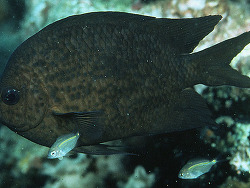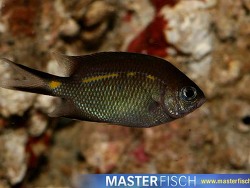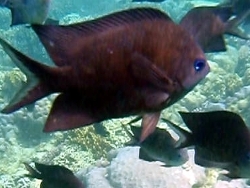Info
The spiny chromis is easy to keep in captivity, it does not have any special requirements and will do any in many types of tank set-ups.
Hardly to be found in marine aquaristic trade, it should be kept in groups.
The picture above show the fish in its juvenile state.
Synonyms:
Abudefduf jordani Seale, 1906
Acanthochromis polyacathus (Bleeker, 1855)
Acanthochromis polycanthus (Bleeker, 1855)
Acanthocromis polyacanthus (Bleeker, 1855)
Chromis desmostigma Fowler & Bean, 1928
Dascyllus polyacanthus Bleeker, 1855
Heptadecanthus brevipinnis De Vis, 1885
Heptadecanthus longicaudis Alleyne & MacLeay, 1877
Heptadecanthus maculosus De Vis, 1885
Homalogrystes guntheri Alleyne & MacLeay, 1876
Classification: Biota > Animalia (Kingdom) > Chordata (Phylum) > Vertebrata (Subphylum) > Gnathostomata (Superclass) > Pisces (Superclass) > Actinopteri (Class) > Perciformes (Order) > Labroidei (Suborder) > Pomacentridae (Family) > Acanthochromis (Genus) > Acanthochromis polyacanthus (Species)







 Dr. Mark V. Erdmann (Conservation International Advertisement), Indonesien
Dr. Mark V. Erdmann (Conservation International Advertisement), Indonesien






















